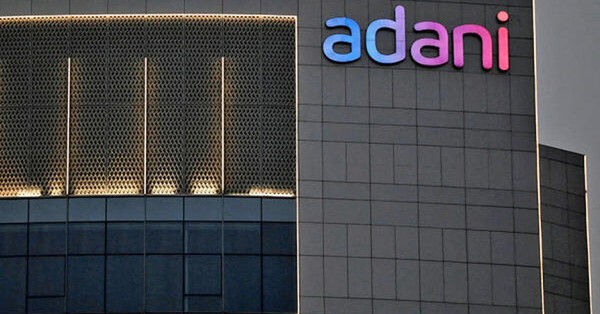Microwave Outlook 2025: Microwave-Fiber Split for 5G/6G Transport
Ericsson’s Microwave Outlook 2025 points to a backhaul market that will be almost evenly split between microwave and fiber by 2030, reshaping transport decisions for dense 5G and future 6G builds.
Why It Matters Now for 5G Backhaul
Microwave already carries traffic for most live 5G networks worldwide, and a rising mix of E-band and emerging higher bands is closing the capacity gap with fiber for short- to medium-range links. For operators facing site densification, fiber lead times, and rising build costs, microwave provides a fast, resilient, and cost-optimized path to scale.
Key Numbers: 49/51 Split and E-band Growth
The installed base of microwave transceivers continues to grow into the tens of millions, with E-band deployments accelerating and overtaking legacy 38 GHz usage in several markets. The report also highlights a projected 49/51 microwave-to-fiber split by 2030, underlining microwave’s long-term relevance in mainstream transport architectures.
Microwave Backhaul’s Return: Faster, Leaner, More Resilient
Operators are rebalancing fiber-first strategies as microwave proves faster to deploy and sufficiently scalable for 5G-Advanced era traffic loads.
Fiber Isn’t the Only Answer for Capacity
While fiber remains the endgame for ultra-long-term capacity, site access, permitting, and civil works keep slowing rollouts and inflating budgets. Modern microwave—especially at millimeter wave—shortens time-to-service for new sites, provides diverse paths to improve resilience, and defers heavy capex until demand materializes.
Mature Markets Rebalance with Microwave
Even in fiber-heavy regions like North America, operators are revisiting microwave to accelerate coverage and add backup paths. Growth markets such as India are pushing E-band into the mainstream, demonstrating that high-capacity, short-hop microwave can scale at national levels.
E/W/D-band: High-Capacity Spectrum for 5G/6G Backhaul
The capacity frontier is moving beyond traditional bands as E-band adoption climbs and W-/D-band enter commercial planning.
E-band Becomes the High-Capacity Workhorse
E-band (around 70/80 GHz) is now the workhorse for high-capacity, short-range backhaul and is outpacing long-used sub-40 GHz bands in new deployments. Its large contiguous channels support multi-gigabit throughput, with growing ecosystem maturity in radios, antennas, and planning tools.
W- and D-band Extend Urban Backhaul Options
Emerging W-band (above 90 GHz) and D-band (above 130 GHz) promise additional spectrum headroom with hop-length performance that approaches E-band for many urban use cases. Early analyses indicate W-band can often deliver comparable distances to a large subset of E-band links, while D-band provides a viable option for ultra-dense topologies where very short hops are acceptable.
Planning: Availability, Latency, Sync, and Rain Fade
Rain attenuation, antenna size, fade margins, and availability targets still govern feasibility, but multi-band strategies, adaptive modulation, and automatic transmit power control help maintain service continuity in adverse conditions. Synchronization requirements for 5G (PTP/IEEE 1588v2, SyncE) and strict latency budgets should be validated per link design.
AI and Automation: Predictive Microwave Operations
AI-enabled telemetry and automation are moving microwave operations toward preventive maintenance and closed-loop optimization.
Streaming Telemetry Transforms Reliability
Operators like O2 Telefónica Germany are demonstrating how AI can correlate weather, interference, and performance metrics to spot degradations early, pinpoint root causes, and schedule interventions before SLA impacts occur. The result is higher reliability, lower truck rolls, and improved customer experience.
What to Deploy: AI Analytics, Ticketing, Playbooks
Prioritize streaming telemetry from radios, topology-aware analytics, automated ticketing, and playbooks for parameter tuning. Integrating AI insights with inventory, spectrum management, and fault systems accelerates time-to-action and reduces total cost of ownership.
20 Gbps Upgrades: E-band, XPIC, and Multiband Paths
New simulations suggest most existing microwave links can double capacity cost-effectively using wider channels and advanced polarization techniques.
E-band + XPIC: Most Cost-Efficient 20 Gbps
Where spectrum fees allow, using a 2,000 MHz E-band channel combined with cross-polarization interference cancellation (XPIC) is one of the most economical ways to reach around 20 Gbps on existing sites. Modeling across multiple European cities indicates the vast majority of in-service links can scale this way without extensive tower or power upgrades.
When Spectrum Is Tight: CA, Dual Radios, Multiband
When wide channels are too costly or unavailable, operators can still achieve major gains through dual transceivers, carrier aggregation, or multi-band configurations, enabling capacity doubling across a large share of sites. The trade-off is lower spectral efficiency and potentially higher opex, underscoring the importance of local spectrum policy in the business case.
Engineering Checklist for 20 Gbps Links
Validate antenna class and alignment for dual polarization, ensure sufficient link budget and fade margins after modulation changes, assess tower loading and power headroom, and update QoS and timing profiles to reflect higher throughput and traffic mix.
Regional Trends: US Resurgence and India’s E-band Momentum
Two markets illustrate how policy and deployment priorities shape microwave adoption curves.
United States: Microwave for 5G Readiness and Resilience
Despite deep fiberization, US operators are turning to microwave to accelerate 5G site readiness, add route diversity for resilience, and bridge buildouts where fiber timelines slip. Favorable local fee structures for E-band can tip total-cost equations in microwave’s favor, especially for small-cell backhaul.
India: National-Scale E-band Backhaul
India’s aggressive rollouts are making E-band a mainstream element of national backhaul strategy, proving that high-capacity microwave can be deployed at scale while balancing cost, performance, and speed-to-market.
5G-Advanced to 6G: Hybrid Transport Playbook
Transport teams should plan for a decade of hybrid fiber–microwave architectures with dynamic capacity layering.
Design for Diversity, Agility, and Time-to-Market
Hybrid topologies with fiber for aggregation plus microwave for last-hop and backup improve availability and speed rollouts. As 5G-Advanced drives higher site throughput and time-sensitive services, microwave’s rapid deployability becomes a strategic hedge against demand uncertainty.
Prepare for New Bands, Licensing, and Standards
Track evolving regulations for E-, W-, and D-band channelization and licensing, and align with fixed service recommendations and regional frameworks. Vendor roadmaps for higher-order modulation, wider channels, and AI-driven RAN-transport coordination will be pivotal as 6G traffic profiles emerge.
Next Steps: Spectrum, XPIC Trials, and AI Ops
Use 2025–2027 to harden transport plans and lock in spectrum, tooling, and processes that future-proof capacity growth.
Actions: Hybrid Blueprints, E-band, W/D Pilots
Refresh your backhaul blueprint with a hybrid fiber–microwave model tied to site density and time-to-market goals; secure E-band spectrum where fees are favorable and pilot W-/D-band in dense urban clusters; deploy XPIC and wider-channel trials to validate 20 Gbps upgrades on live links; expand telemetry and AI ops across microwave domains for preventive maintenance; and revisit SLAs, QoS, and synchronization designs to accommodate higher-capacity, multi-band links.
Watchpoints: Fees, Weather, Supply, and Timing
Monitor local spectrum fee regimes, weather-driven availability impacts, supply-chain lead times for high-frequency radios and antennas, and interworking with timing, security, and automation platforms. The winners will be those who turn microwave into a programmable, AI-optimized transport layer alongside fiber—not a last resort.








































